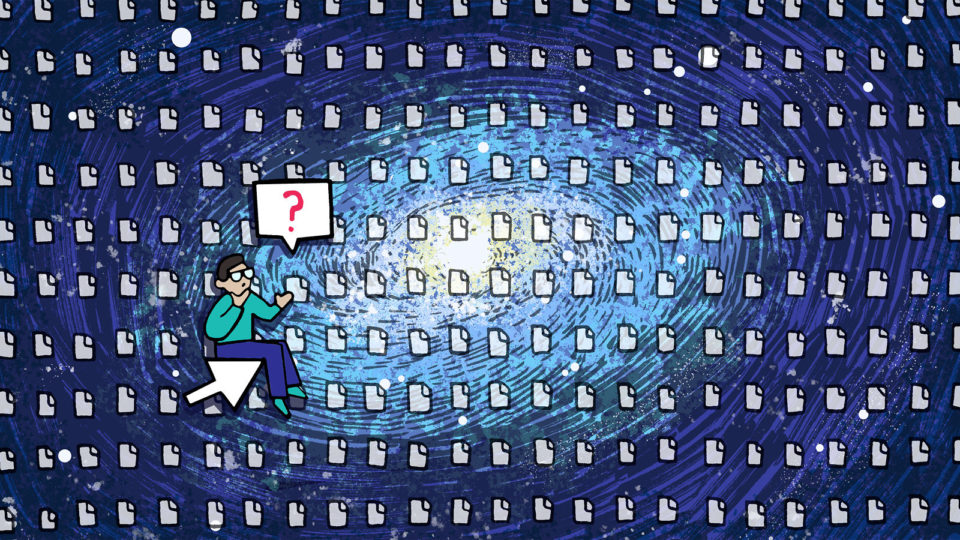Kevin Schawinski had a problem:
In 2007 he was an astrophysicist at Oxford University and hard at work reviewing seven years’ worth of photographs from the Sloan Digital Sky Survey—images of more than 900,000 galaxies. He spent his days looking at image after image, noting whether a galaxy looked spiral or elliptical, or logging which way it seemed to be spinning.
copyright by www.symmetrymagazine.org
 Technological advancements had sped up scientists’ ability to collect information, but scientists were still processing information at the same rate. After working on the task full time and barely making a dent, Schawinski and colleague Chris Lintott decided there had to be a better way to do this.
Technological advancements had sped up scientists’ ability to collect information, but scientists were still processing information at the same rate. After working on the task full time and barely making a dent, Schawinski and colleague Chris Lintott decided there had to be a better way to do this.
There was: a citizen science project called Galaxy Zoo. Schawinski and Lintott recruited volunteers from the public to help out by classifying images online. Showing the same images to multiple volunteers allowed them to check one another’s work. More than 100,000 people chipped in and condensed a task that would have taken years into just under six months.
Citizen scientists continue to contribute to image-classification tasks. But technology also continues to advance.
The Dark Energy Spectroscopic Instrument, scheduled to begin in 2019, will measure the velocities of about 30 million galaxies and quasars over five years. The Large Synoptic Survey Telescope, scheduled to begin in the early 2020s, will collect more than 30 terabytes of data each night—for a decade.
“The volume of datasets [from those surveys] will be at least an order of magnitude larger,” says Camille Avestruz, a postdoctoral researcher at the University of Chicago.
To keep up, astrophysicists like Schawinski and Avestruz have recruited a new class of non-scientist scientists: machines.
Researchers are using artificial intelligence to help with a variety of tasks in astronomy and cosmology, from image analysis to telescope scheduling.
“Five years ago, [machine learning algorithms in astronomy] were esoteric tools that performed worse than humans in most circumstances,” Nord says. Today, more and more algorithms are consistently outperforming humans. “You’d be surprised at how much low-hanging fruit there is.”
Thank you for reading this post, don't forget to subscribe to our AI NAVIGATOR!
Machine learning can help observatories schedule telescopes so they can collect data as efficiently as possible. Both Schawinski’s lab and Fermilab are using a technique called reinforcement learning to train algorithms to solve problems like this one. In reinforcement learning, an algorithm isn’t trained on “right” and “wrong” answers but through differing rewards that depend on its outputs. The algorithms must strike a balance between the safe, predictable payoffs of understood options and the potential for a big win with an unexpected solution. […]
read more – copyright by www.symmetrymagazine.org


Kevin Schawinski had a problem:
In 2007 he was an astrophysicist at Oxford University and hard at work reviewing seven years’ worth of photographs from the Sloan Digital Sky Survey—images of more than 900,000 galaxies. He spent his days looking at image after image, noting whether a galaxy looked spiral or elliptical, or logging which way it seemed to be spinning.
copyright by www.symmetrymagazine.org
There was: a citizen science project called Galaxy Zoo. Schawinski and Lintott recruited volunteers from the public to help out by classifying images online. Showing the same images to multiple volunteers allowed them to check one another’s work. More than 100,000 people chipped in and condensed a task that would have taken years into just under six months.
Citizen scientists continue to contribute to image-classification tasks. But technology also continues to advance.
The Dark Energy Spectroscopic Instrument, scheduled to begin in 2019, will measure the velocities of about 30 million galaxies and quasars over five years. The Large Synoptic Survey Telescope, scheduled to begin in the early 2020s, will collect more than 30 terabytes of data each night—for a decade.
“The volume of datasets [from those surveys] will be at least an order of magnitude larger,” says Camille Avestruz, a postdoctoral researcher at the University of Chicago.
To keep up, astrophysicists like Schawinski and Avestruz have recruited a new class of non-scientist scientists: machines.
Researchers are using artificial intelligence to help with a variety of tasks in astronomy and cosmology, from image analysis to telescope scheduling.
“Five years ago, [machine learning algorithms in astronomy] were esoteric tools that performed worse than humans in most circumstances,” Nord says. Today, more and more algorithms are consistently outperforming humans. “You’d be surprised at how much low-hanging fruit there is.”
Thank you for reading this post, don't forget to subscribe to our AI NAVIGATOR!
Machine learning can help observatories schedule telescopes so they can collect data as efficiently as possible. Both Schawinski’s lab and Fermilab are using a technique called reinforcement learning to train algorithms to solve problems like this one. In reinforcement learning, an algorithm isn’t trained on “right” and “wrong” answers but through differing rewards that depend on its outputs. The algorithms must strike a balance between the safe, predictable payoffs of understood options and the potential for a big win with an unexpected solution. […]
read more – copyright by www.symmetrymagazine.org
Share this: